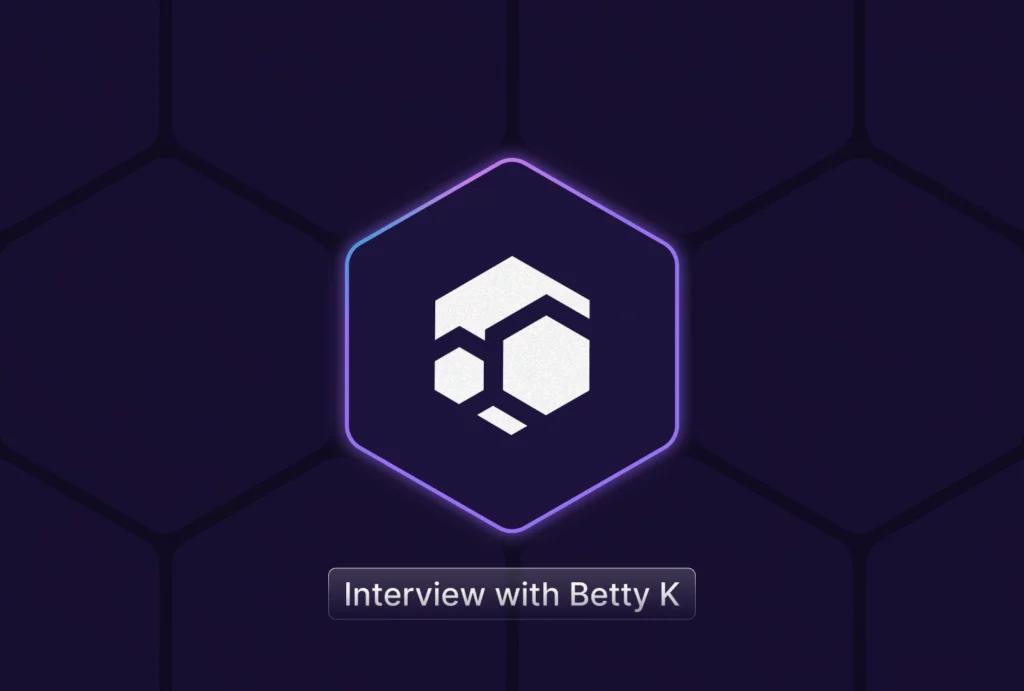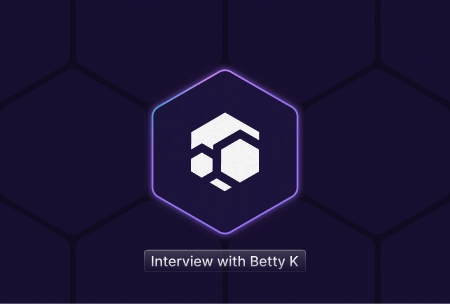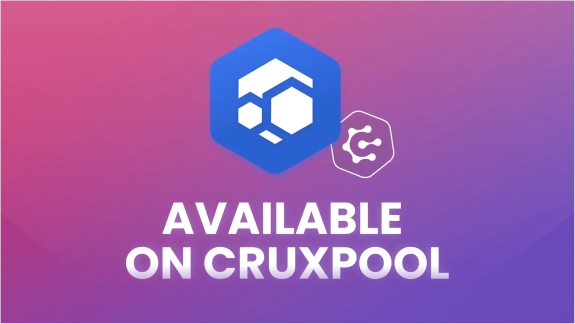What is Flux cryptocurrency? Interview with Betty K, member of the Flux cryptocurrency team


Have you ever heard of Flux cryptocurrency?
Born from the fork of the anonymous coin ZCash, Flux was created in 2018. It was formerly called ZELCash.
Like cryptocurrencies that can be mined by GPU, Flux uses a Proof of Work system. It uses the ZelHash algorithm, a modification of the Equihash algorithm for ASIC resistance.
The particularities of Flux cryptocurrency are its whole ecosystem and it provides the ability to interact with other blockchains through Flux parallel assets. With parallel assets, the Flux Blockchain ensures interoperability with other blockchains and access to DeFi.
Flux is a cryptocurrency with really interesting new features. We had the honor to meet the Flux developers, and even to have an interview with Betty K, Chief Marketing Officer of Flux.
So, without further delay, here is the Flux interview!
Interview with Betty K, member of the Flux cryptocurrency team
We spoke with the Flux cryptocurrency team, and Betty K, Chief Marketing Officer of Flux, was responsible for consolidating the responses.
Let’s go for the interview!
What is Flux cryptocurrency and how does it work?
Betty K: Flux is the cryptocurrency that powers the Flux ecosystem and is used for purchasing resources, collateralizing nodes and fueling transactions on FluxOS. Also for rewarding both miners and FluxNode operators for providing computational resources.
Flux ecosystem is devoted to empowering the people of the internet to develop, deploy and use the decentralized internet of the future, the Web 3.0.

At this moment the Flux Ecosystem consists of: A native, minable POW cryptocurrency ($FLUX), a powerful decentralized computational network (FluxNodes), a Linux based operating system (FluxOS), the first digital asset platform (ZelCore), and finally the Flux blockchain for on-chain governance, economics, and parallel assets to provide interoperability with other blockchains and DeFi access.
Currently Flux has a computational network consisting of around 12,000 real decentralized nodes globally with more than 82,500 CPU cores, 253 terabytes of RAM and 5,600 terabytes of storage, that makes Flux the largest decentralized network in the world.
The network is fully operational hosting over 4000+ DApps and continues to deploy many decentralized projects and developing active partnerships with blockchain projects, businesses and app developers.
Flux is and will always be an independent, community-driven and open-source project.
How does ZelCore Wallet work?
Betty K: ZelCore is our official non-custodial wallet.
It is a secure and unique crypto wallet protecting your assets by decentralized two factor authentication with built-in exchanges.
ZelCore does not store or transmit any personal data or recovery seeds and gives the users full control over their account and private keys.
ZelCore Wallet is a part of the Flux Ecosystem. Flux node operators run their nodes inside it and via Fusion app Flux can “travel” back and forth to 6 other blockchains.
If you want, you can check our website dedicated to ZelCore Wallet.
Why did you set up Flux parallel assets?
Betty K: Flux parallel assets create bridges to other networks, access Defi trading on multiple exchanges, pave the way for future developments and more innovation. Thanks to them Flux is a solid interoperable network.
Parallel assets are interchangeable via Fusion in ZelCore Wallet. The initial supply of a parallel assets is distributed to Flux holders via an airdrop when the parallel assets are launched. 6 parallel assets have been launched and distributed so far. They are also distributed through parallel mining and as rewards for Flux node operators. Parallel mining rewards GPU miners not only with native Flux but also with parallel assets. Miners receive parallel assets in a 1:10 ratio for each of the 10 parallel assets, even the ones not launched yet. This effectively doubles the mining yield of Flux.
Learn how Flux parallel assets work on our Medium.
What are Flux nodes (Cumulus, Nimbus, Stratus, Titan and Cirrus masternodes)?
Betty K: Flux nodes are real decentralized nodes run by users all over the world on their own hardware or using VPS. There are three tiers of FluxNodes with different levels of required collateral and hardware specifications.
Cumulus requires 1,000 FLUX, Nimbus 12,500 Flux and Stratus 40,000 Flux. The collateral is not locked and you can stop running nodes whenever you want and sell the collateral immediately.
On the other hand, Titan nodes are similar to staking, collateral (50 up to 40,000 FLUX) is locked for 3, 6 or 12 months per Zel-ID. Titan is on-chain staking launched on July 20 and provides infrastructure for enterprise grade clients, such as Stratus nodes.
Cirrus has not been launched yet and it will be completely off chain with low 5 Flux collateral to reduce barrier of entry.
Can you tell us a little about Flux rewards?
Betty K: The reward for running FluxNode is calculated so there is a fair ROI.
You can check it on our Flux dashboard.
What is the 50/50 split of Flux mining rewards and Flux node rewards? Will it still be available?
Betty K: The block reward is divided by 50% POW and 50% goes to FluxNode operators. The current reward for a block is 75 Flux. There is a Flux Block reward halving every 2.5 years, the next one is coming up in February 2023.
It is still available. We do not plan to change that since it is working perfectly and mining is fundamental for decentralization of Flux.
Unlike ETH merging which will abandon its mining community that helped build it to what it is now, Flux has no intention of changing from PoW and constantly monitoring the network to ensure it is ASIC-resistant.
Why is the decentralization of Flux important to you?
Betty K: Decentralization is essential for Flux.
There are many projects calling themselves “Web3” but they use centralized infrastructure, that means they are not decentralized and applications running on them can be down when AWS or other cloud computing they are using is down.
We do not want to be the next Ethereum or Solana, we are the first real decentralized Web3 infrastructure.
What is Proof of Useful Work (PoUW) for Flux? How will PoUW impact mining pools?
Betty K: With PoUW, Flux brings more than an alternative to cryptomining.
We are transforming the way we currently consume and use resources. Instead of solving randomized algorithms, Flux GPU mining will be directed at solving real-world problems through distributed computing such as machine learning, rendering and more.
As for PoUW itself, it will not affect the mining pools, as we are building extra functionality on top of your regular POW, Flux aims on improving the use of resources on top of ANY chain.
What will be your vision after The Merge?
Betty K: We are not too fussed about The Merge.
Flux has zero dependency on what other chains do, and this includes ETH. We will most likely see an increase of miners on the Flux Network, and we welcome them all, as it increases the security on the network. We had a big surge in the later parts of 2021 with the price increase of Flux, and our mining pools were able to handle the big inFlux.
As a result of the migration from ETH to other coins, miners will be able to discover and participate in our Flux Network. It will be up to them to decide whether it will involve hosting nodes, persistent storage solutions, traditional Proof of Work, experimenting with and collaborating on Proof of Useful Work, or even all of these.
What are the future Flux projects?
Betty K: There are several future Flux projects, just like:
- Cirrus Nodes
- Jetpack 2.0
- Decentralized Persistent Storage solutions
- Decentralized Databases
- Decentralized Compute solutions – PoUW (AI / Rendering / Gaming)
Do you want to compete with AWS?
Betty K: We want to be an alternative to AWS and other large cloud providers.
We want to bring cloud solutions back to the people and run by the people.
Which Flux mining pool to choose?
We launched our Flux mining pool to distribute hashrate and allow decentralization.
Why Flux cryptocurrency on Cruxpool?
We want to support projects that have a vision committed to Proof of Work, allowing anyone with hardware to participate in the validation process of blockchains.
In addition, the Flux cryptocurrency team is very active and hardworking. It is important for us to support such ambitious projects!

Why should you mine Flux cryptocurrency on Cruxpool?
Flux is a cryptocurrency that is worth a look. In addition to its unique ecosystem, parallel assets are a great way to mine Flux and other cryptocurrencies.
Our mining pool Cruxpool is delighted to propose Flux. This is a way to involve in interesting projects that allow decentralization.
What if you start mining Flux on Cruxpool?